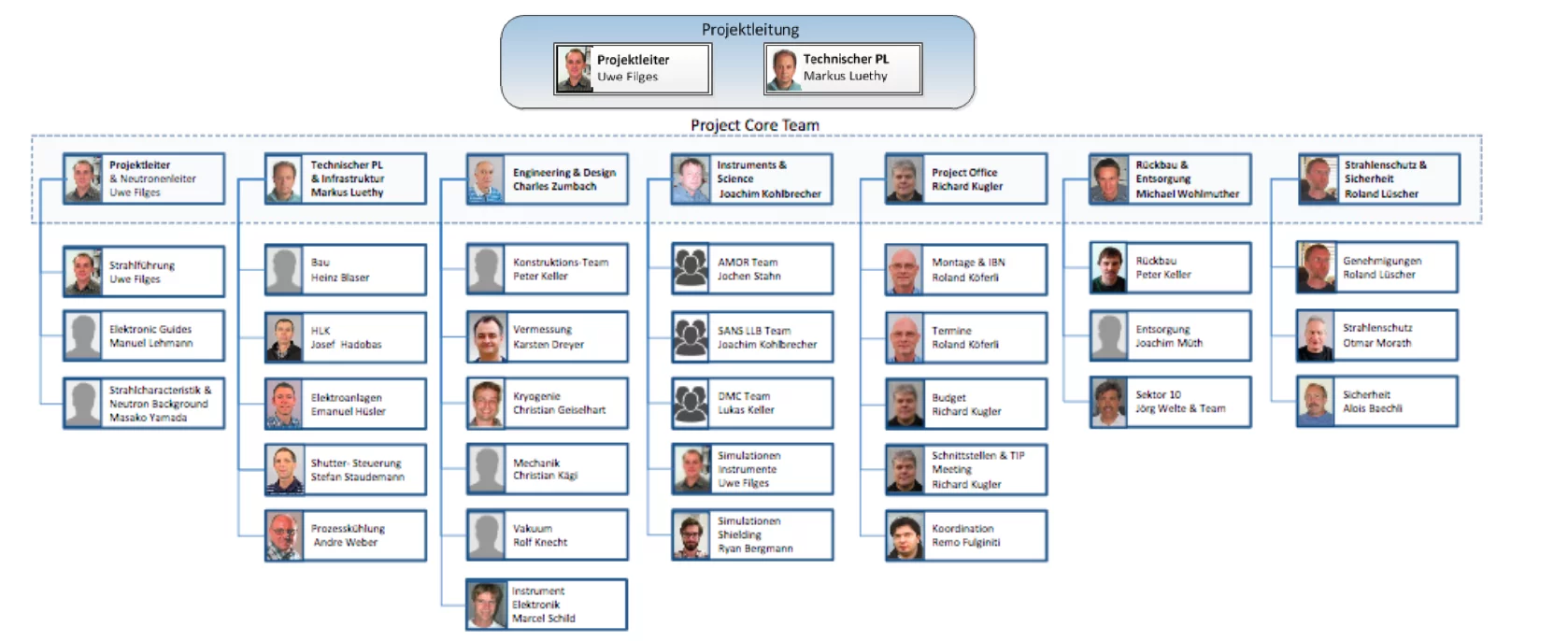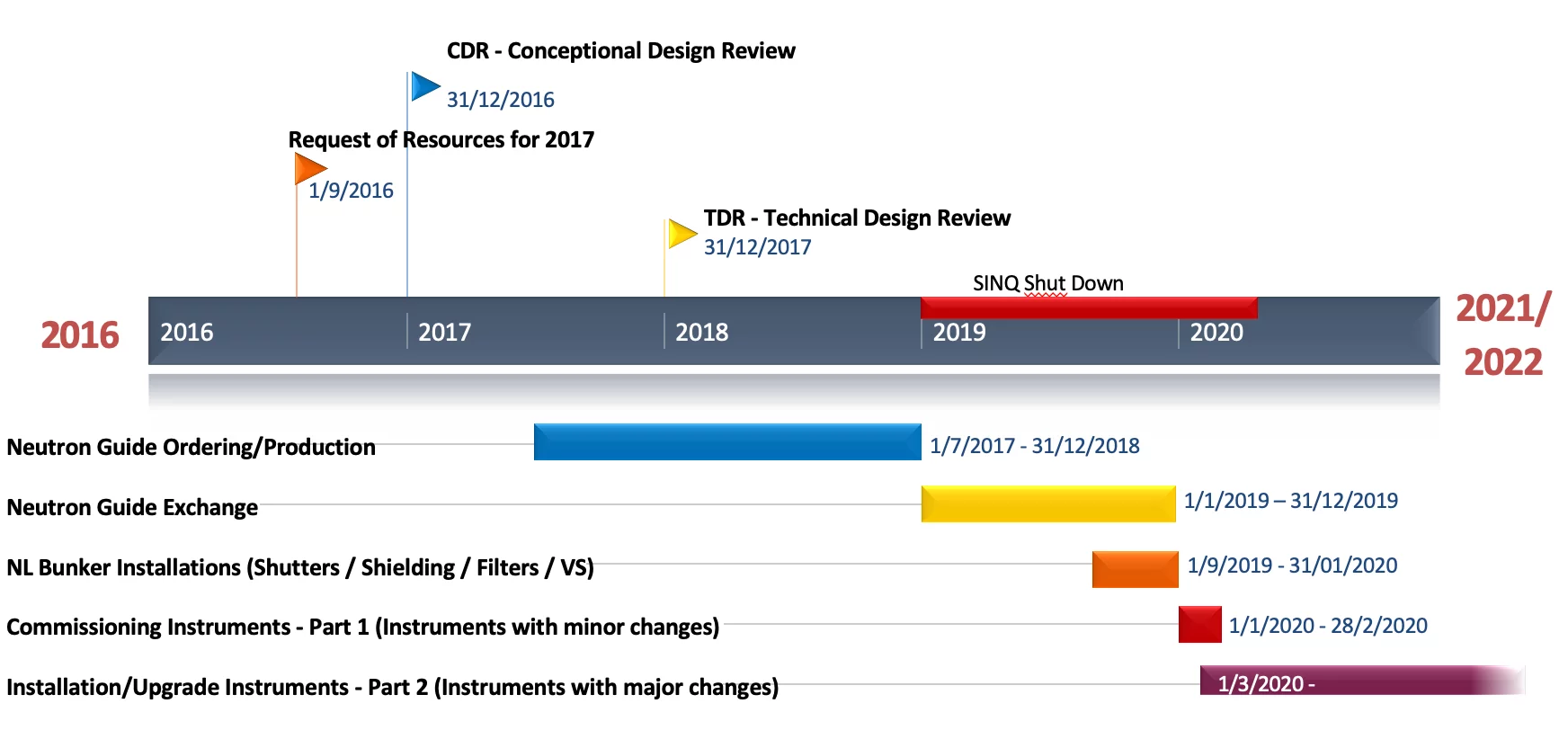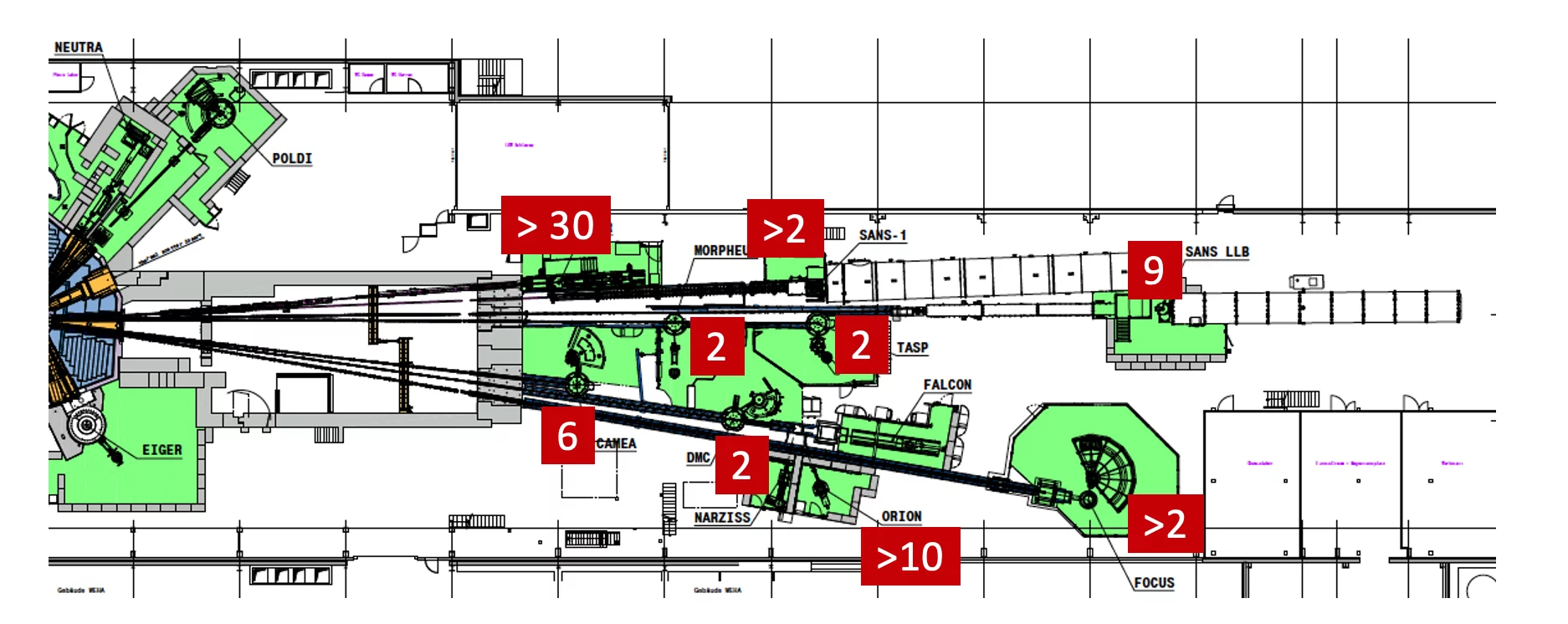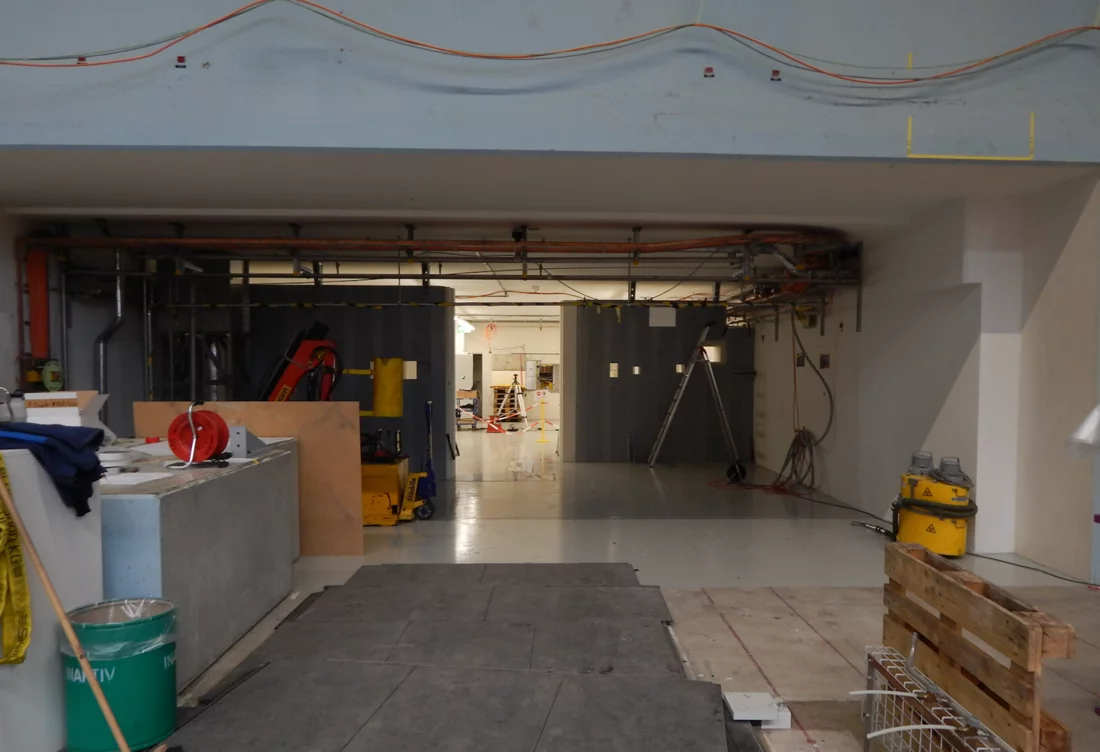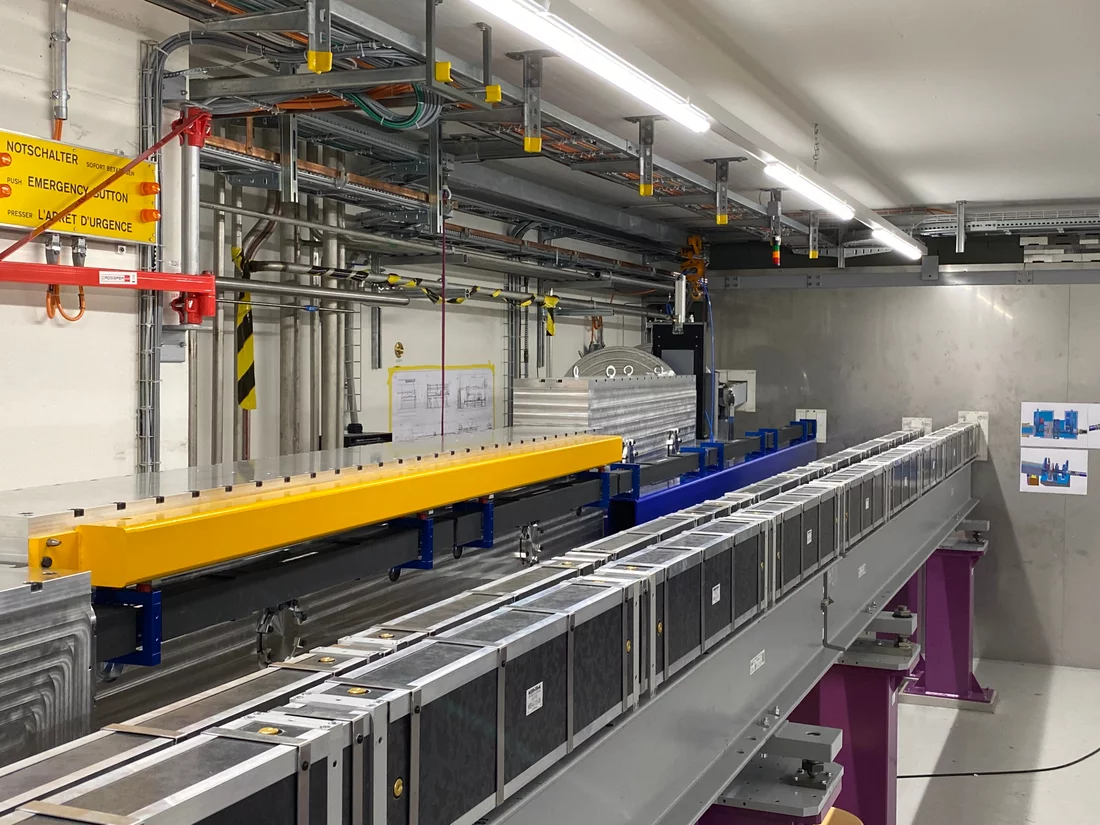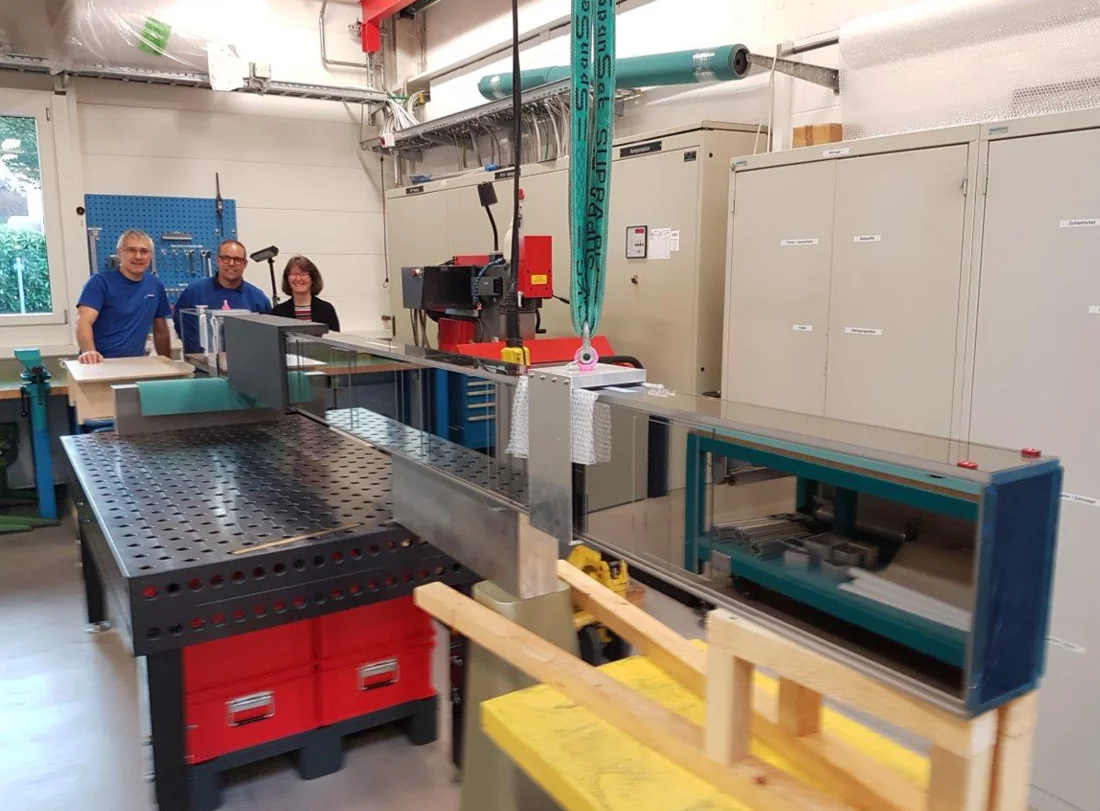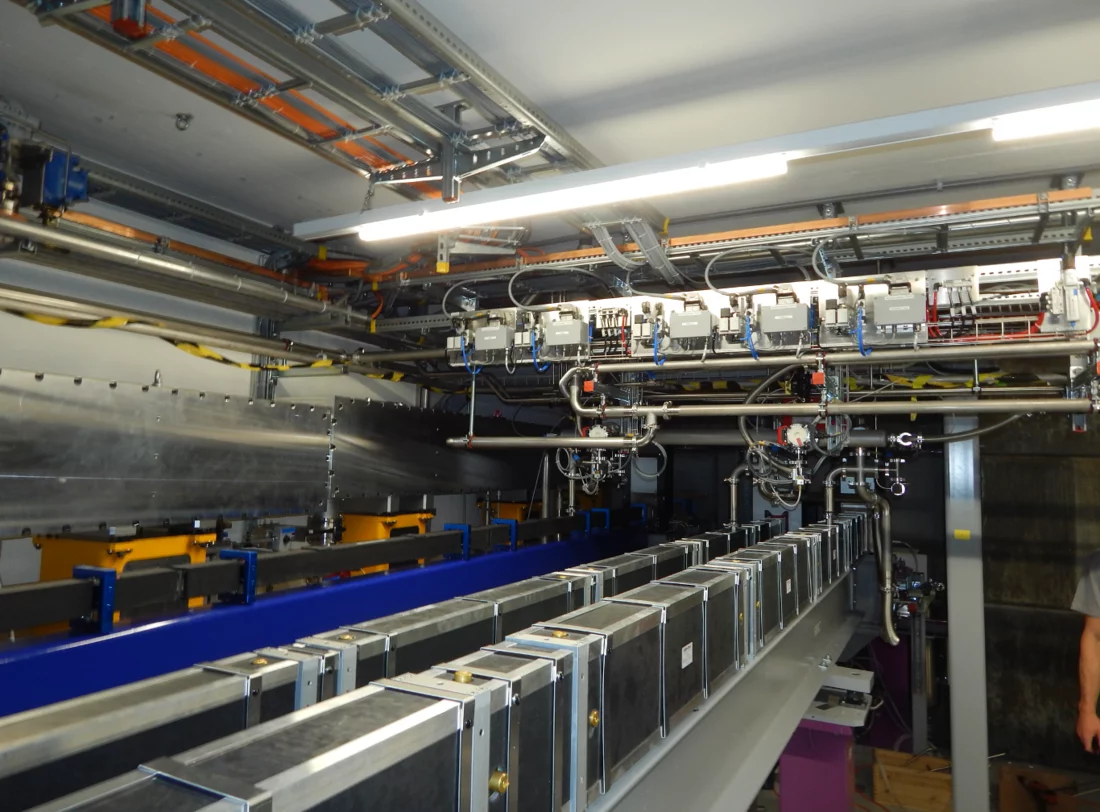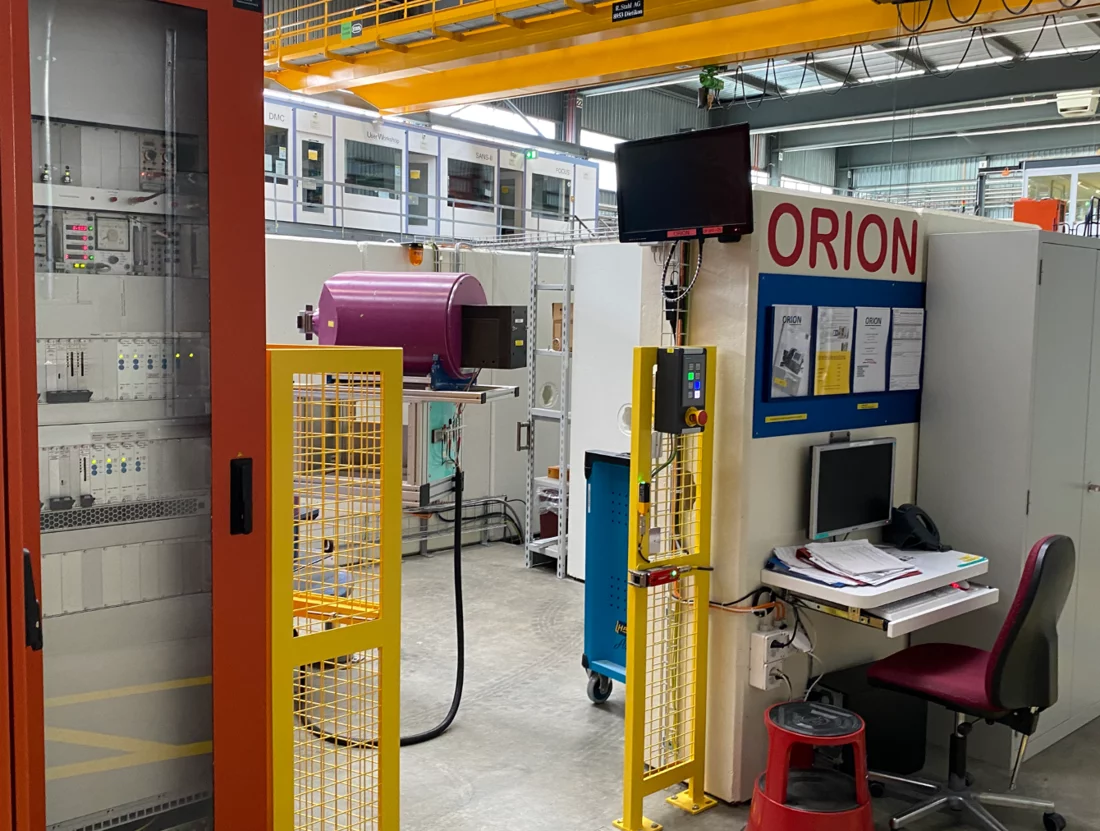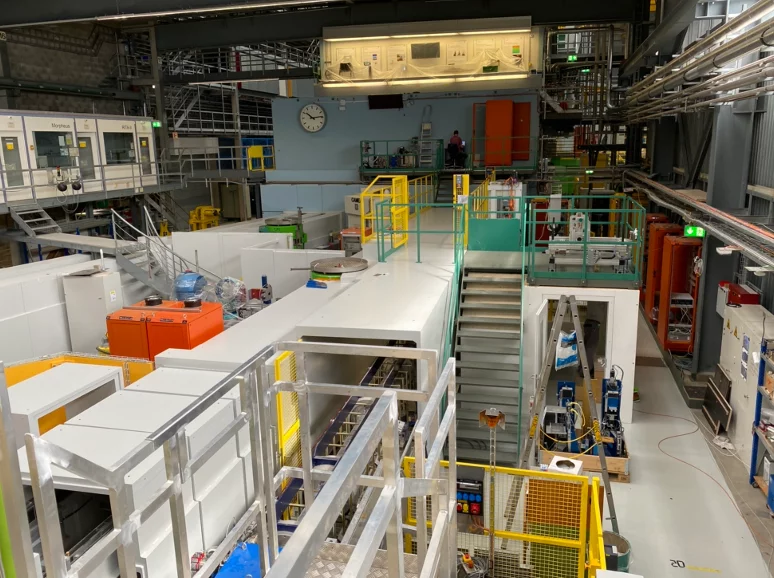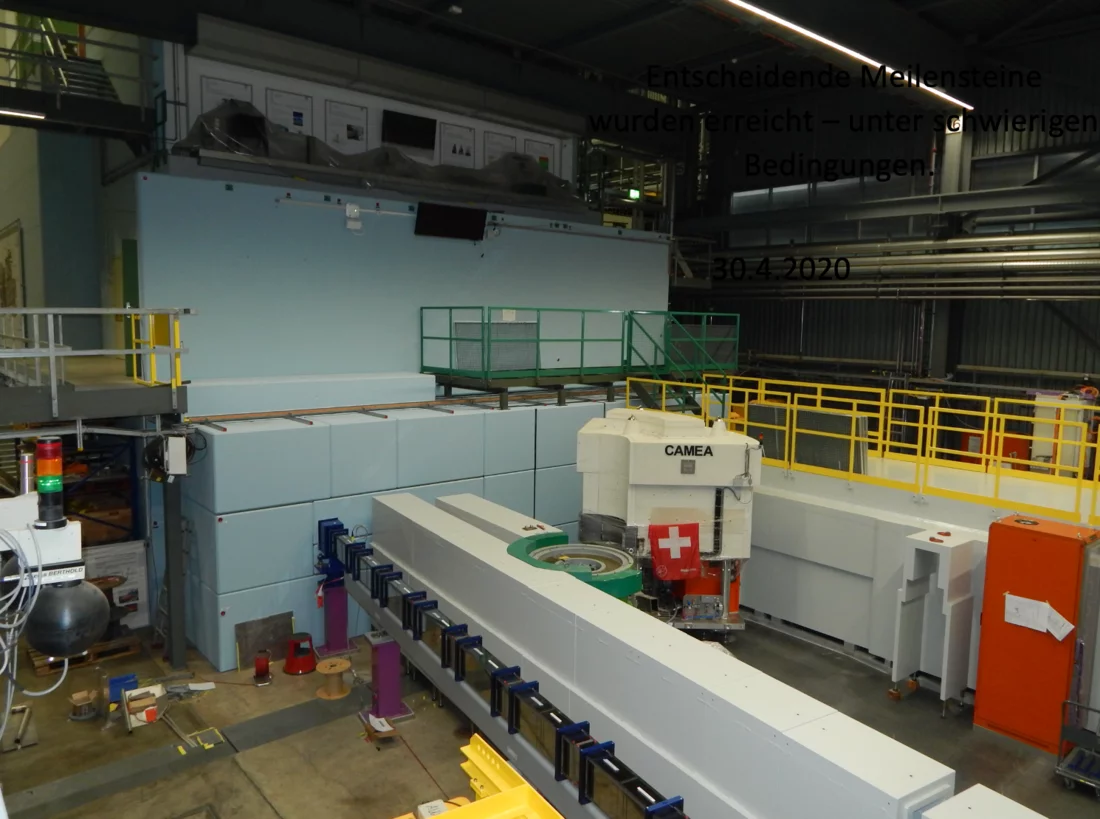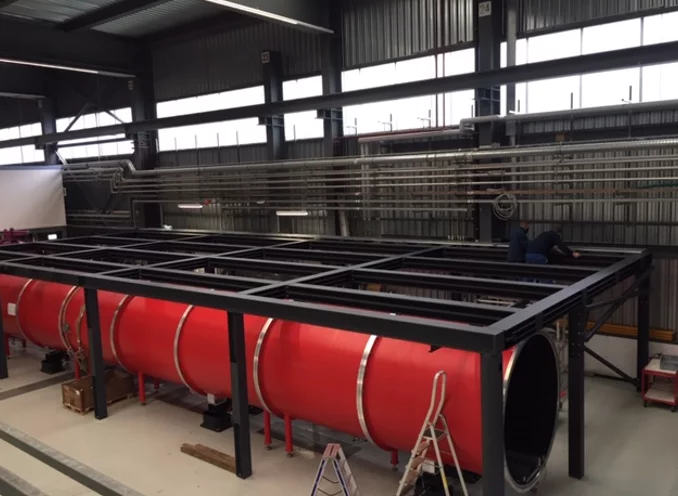SINQ Upgrade Project
The SINQ Upgrade was started with a planning and design phase in July 2017, with the aim of substantially improving the neutron flux and enabling the study of much smaller sample cross-sections by building on recent progress in the manufacturing of neutron guides. In the period between January 2019 and August 2020, all seven neutron guides feeding the 10 instruments in the neutron guide hall have been replaced entirely. Moreover, improved shielding for fast neutrons has been installed in the neutron guide bunker to enhance the signal-to-noise ratio. Both measures together allowed for the realization of measured flux gains ranging from 2–30 depending on the instrument (see Figure: Guide Performance), in excellent agreement with the design specification obtained in simulations.
As part of the SINQ Upgrade, the instruments AMOR, CAMEA, ORION and DMC are also being upgraded. In collaboration with the French Laboratoire Leon Brillouin (LLB), an additional small angle neutron scattering instrument has been transferred from the recently shut-down French neutron source Orphée and is currently being installed. The project was financed by internal PSI funds of around 17 Million CHF (NUM and PSI directorate). The preparation phase was supported by SNF. The project has been finalized in June 2021, offering substantially improved measurement capabilities to the international user community of PSI.
Project Organization
The NUM laboratory LIN was assigned with the management of the overall project that is carried out in a matrix organization, which takes full advantage of expert know-how in instrument design and construction in LIN and instrument scientist in LNS within NUM but also of engineering and administrative competences in other divisions (GFA and LOG) of PSI. The project organigram is shown below.
The project was lead by Uwe Filges.
SINQ Upgrade Schedule
Performance and Background Reduction
The SINQ guide upgrade resulted in intensity gains between 2-30. In addition the background caused by fast neutrons was reduced by a factor 6. The background reduction was realized by addtional shielding walls made of borated mineral cast and borated polyethylen. Verification was done by Bonner Sphere Measurements.


